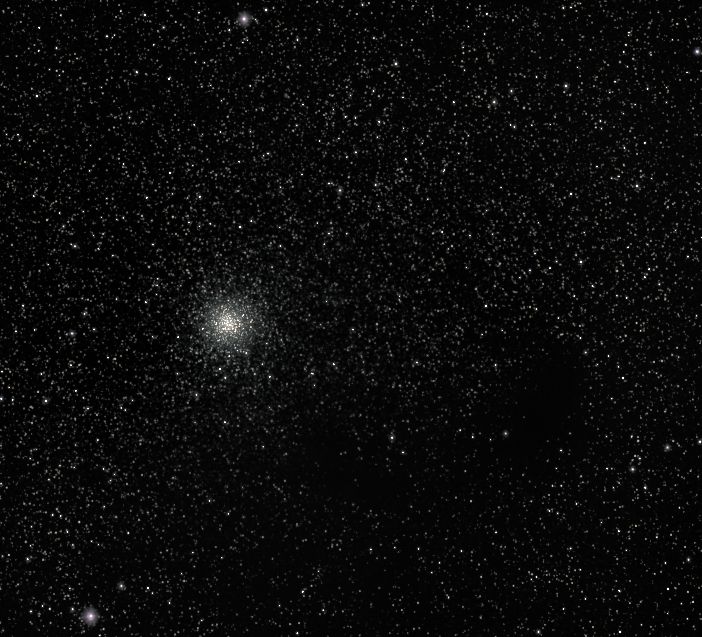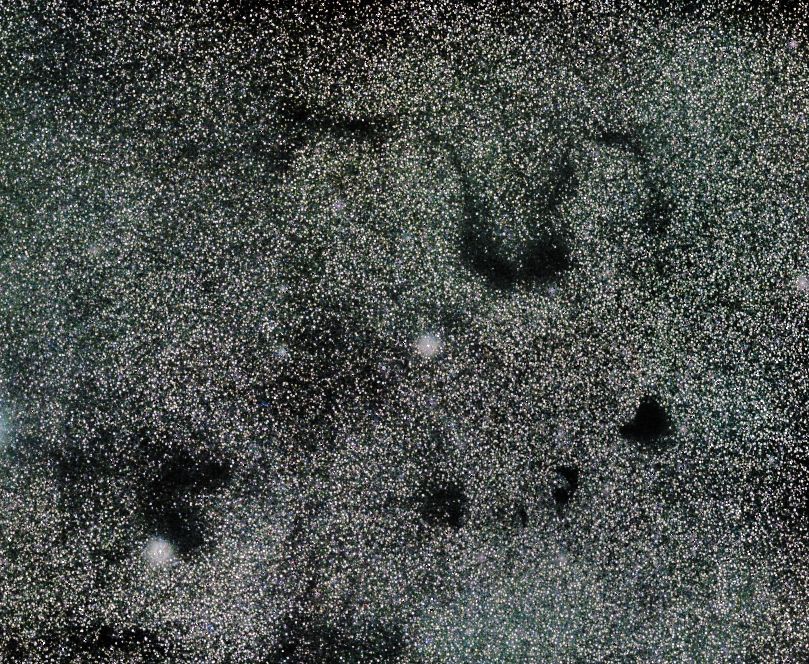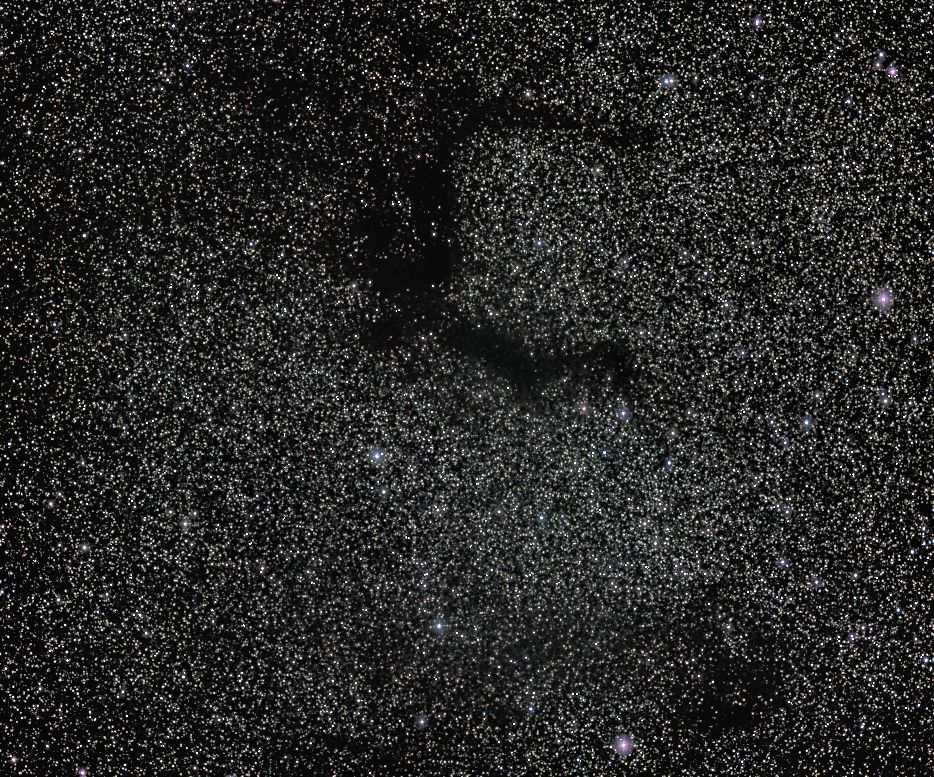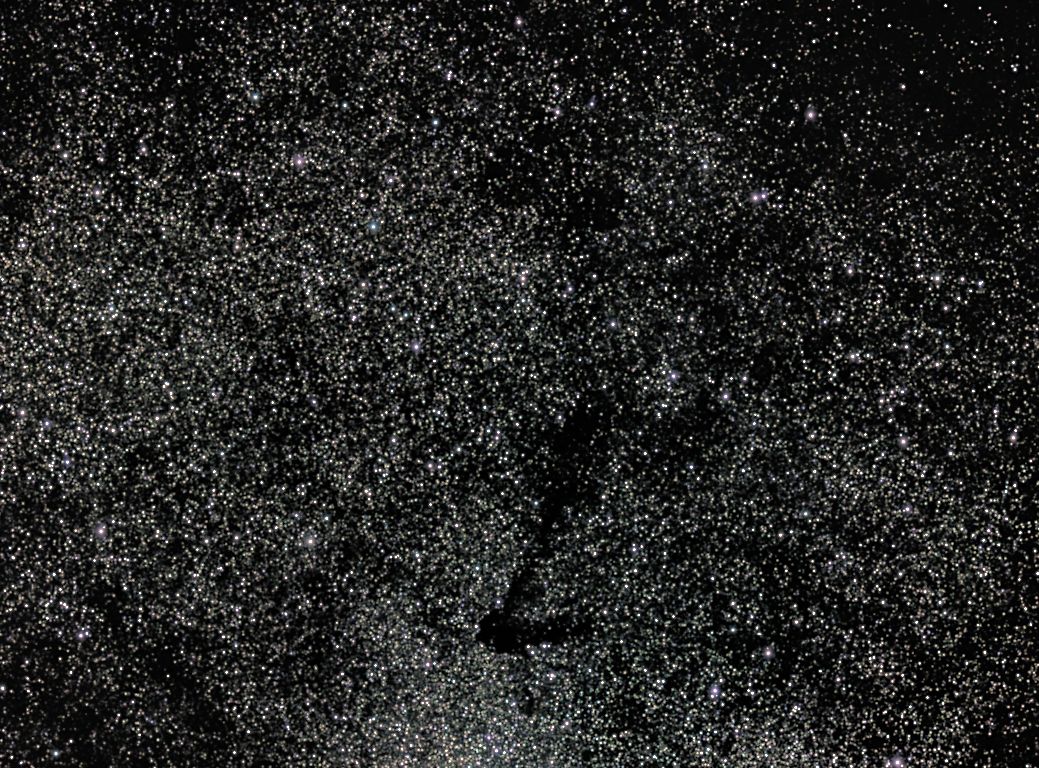And now, for something completely different. . .
When early astronomer William Herschel (he discovered the planet Uranus in 1781) was studying the Milky Way, he reported that there appeared to be “a hole in the sky” in several places. The nature of these dark areas was not understood until the 1940s when Dutch-American astronomer Bart J. Bok proposed that they were areas of star formation, sometimes called dark nebulae. One such region is the molecular cloud Barnard 64. Interestingly, it is found quite close to globular cluster M9. (Click here to see my previous post about globular clusters.)
Dark Nebula B64 and Globular Cluster M9 (20 min total exposure Aug 8, 2022)

According to Burnham’s Celestial Handbook, Herschel had the whimsical idea that a nearby globular cluster might have formed from the “missing” stars.
The Snake Nebula, Barnard 72, is an S-shaped dark nebula, appropriately enough in the constellation Ophiuchus the Serpent Bearer. Smaller, isolated dark nebulae get their own designation: Bok globules. Bok globules are cool clouds of gas and dust that look like drops of black paint. Usually, multiple star systems are forming inside. The dark blobs B68, B69 and B70 below the Snake Nebula are good examples of Bok globules.
The Snake Nebula and its neighbors (20 min total exposure Aug 29, 2022)

You can see that the Snake and its neighbors are silhouetted against a much “busier” part of the Milky Way. B68 is relatively small and nearby, a mere 500 light-years away. It’s extremely low in mass, at just twice the mass of our Sun, and it’s quite small in extent, with a diameter of approximately half a light-year.
Dark nebulae give off no light of their own and they don’t reflect light from nearby stars. We see one like Barnard’s E only because lies closer to us than the Milky Way behind it.
Barnard’s E (20 min total exposure Aug 29, 2022)

As you can see, the B143 portion of Barnard’s E is much darker and denser than the B142 portion.
Finally, here’s B104, a dark nebula taking the form of the letter “L”, sometimes called the Fish Hook Nebula.
The Fishhook Nebula (20 min total exposure Aug 29, 2022)

You will have noticed that all these dark nebulae are designated as Barnard or B objects. Astronomer Edward Barnard compiled his Catalogue of Dark Markings in the Sky, or the Barnard Catalogue for short. The nebulae listed therein have become known as Barnard objects. The original catalogue listed 182 nebulae, while the final 1927 version lists 369.
I hope you have enjoyed seeing this small sample of Barnard dark nebulae.